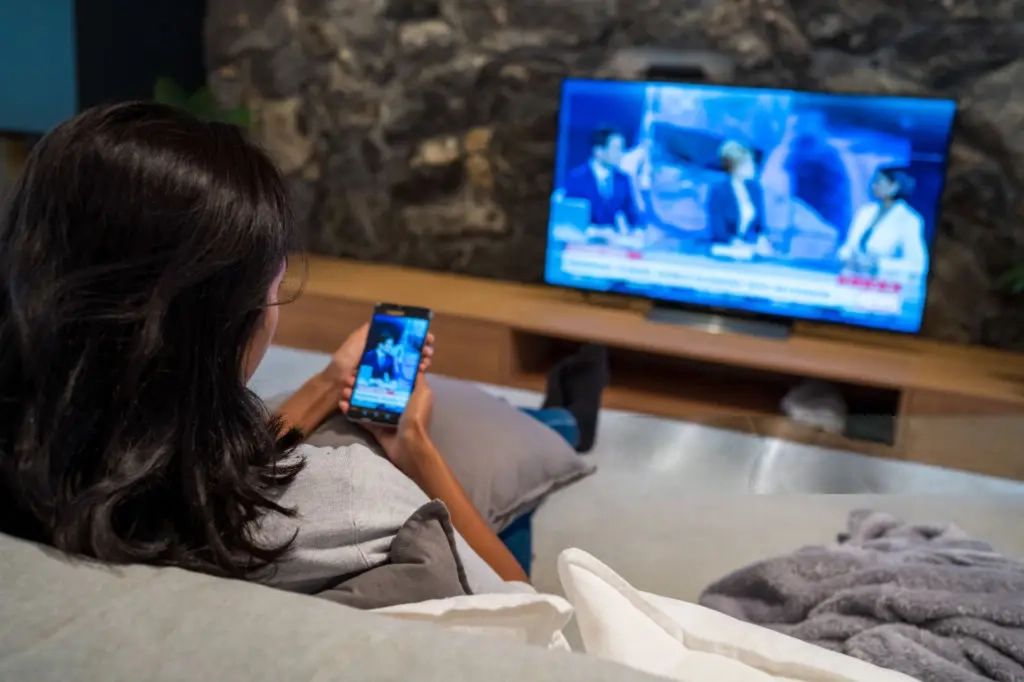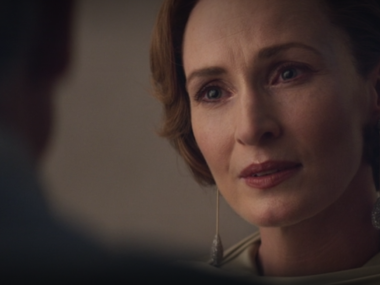One of the many ways streaming has impacted the entertainment industry is how dialogue is written. Not with witty banter or memorable one-liners, but the basic art of characters talking like real human beings.
Now, more and more shows rely on dialogue that exists to explain the obvious. As if characters are aware that someone in the next room might be half-listening while they scroll through their phone.
This isn’t just lazy writing. It’s an adjustment to the way people watch TV now.
The Rise of “Second-Screen” Storytelling
There’s a practical reason behind this practice. Today’s viewers rarely give a show their full attention. People text, tweet, or multitask while their favorite shows play in the background. It’s not uncommon for someone to cook dinner, answer emails, and binge a show all at once.
For studios, that’s a problem. With 80% of viewers glued to a second screen, they might lose track of the plot and tune out altogether. Writers are told through creative notes or “clarity” directives to have characters explain everything that’s happening during a scene. A character will say something like, “I can’t believe my brother betrayed me” while standing next to the brother in question. They will narrate their actions, spell out their feelings, or restate the same information multiple times.
The Cost of Explaining Everything
Expository dialogue breaks the illusion of immersion. Real people don’t narrate their every move or emotion. When writers force characters to do it, it pulls viewers out of the world they’re crafting.
TV is a visual medium. The power lies in what we see: the facial expressions, set design, pacing, silence. Expository dialogue devalues that experience. It treats the audience as inattentive students being spoon-fed a lecture rather than active participants. If the audience won’t look up, the story is dumbed down to accommodate them.
While it might sound convenient to have anything spelled out for you while your back is to the screen, it gets annoying after a while.
Plus this is the age of streaming! You can rewind and rewatch scenes instantly! How is it that the quality of TV is going down in an era where we can watch something at any time you want?
Why Executives Should Worry (But Don’t)
What’s baffling is that this should have been a concern that would haunt TV executives thirty years ago. Back then, missing an episode was a big deal because you didn’t know when you’d be able to watch it again. Yet somehow, in 2025, the viewers with the most flexibility are the ones being treated like they can’t focus for five minutes straight.
The truth is, second-screen behavior isn’t going away. It’s baked into how people interact with media now. Yet the solution isn’t to dumb everything down. It’s to make the content compelling enough that viewers want to look up from their phones.
Expository dialogue betrays one of storytelling’s oldest rules: show, don’t tell. When TV stops trusting its own visuals it stops being art and turns into background noise. If a show can’t compete with TikTok, that’s not the audience’s fault.
There’s a Better Way to Handle Distraction
There are ways to accommodate modern viewing habits without ruining the dialogue. Writers can spread key information across scenes rather than dumping it all at once. They can rely more on visual cues to communicate what’s happening. An actor’s glance, a shift in tone, a meaningful silence. Things to prompt viewers to pay attention to what’s going on.
Even when exposition is necessary, it can be handled with tension, humor, or irony. Make the dialogue work “off the nose,” to reveal personality instead of simply delivering information. Shows can also use flashbacks or creative reveals to give viewers context naturally, without forcing characters to narrate their own stories.
If streaming platforms are serious about audience engagement, they could take a page from video games or interactive media. Provide supplemental material for those who want it. Companion sites, social posts, or behind-the-scenes insights can satisfy the second-screen urge without dragging it into the script itself.
Executives need to remember that TV doesn’t have to chase attention like an app does. It has to earn it.






